Question
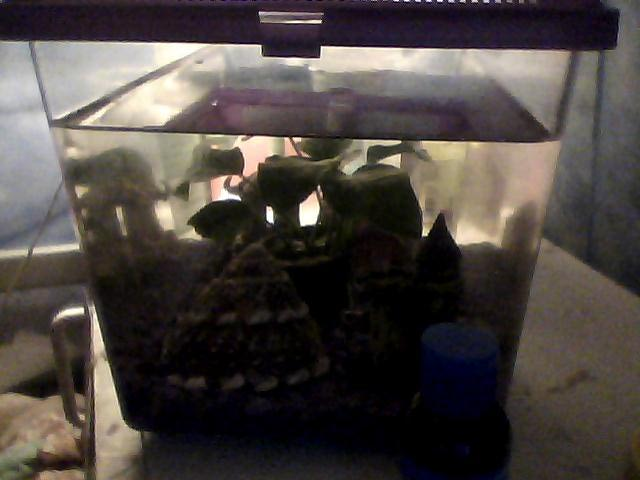 Oreo
Oreo
I've been trying to breed bettas for a while but it never works they just beat eachother up. I read all about breeding betttas but I never cuold do it. the furthest I got is having a male make a bubble nest. HOW DO YOU BREED BETTAS!!!!!
resuntly all my bettas are dying. I only have one left. They all die from different causes too. I also made sure I toke good care of them. Like I clean their bowls once a week, I feed them the right amount, and I give them medicine when they need it. Also they're all different ages. WHY ARE THEY ALL DYING!!!!!
AnswerAnna,
I have been breeding Betta's for over 30 years, and I can tell you what you are doing wrong, and then set you in the right direction. The first problem is keeping them in bowls. They are not big enough and you breeding pair will not breed if in a bowl. Betta's are tropical fish and have to have their water between 80 and 82 degrees at all times. There is no heater that will keep the water at those temperatures in a bowl. Each of your males should be in his own 5 gallon aquarium and each have to have a heater. The females are easier to keep together, but you still want to put them in their own 5 gallon tanks with heaters unless the females are sisters. I have 18 breeding pair at the moment, and I have 36 5 gallon tanks with 36 heaters. Breeding these fish is not an easy thing to do not is it inexpensive. I will tell you how I breed them step by step. If any of the steps you cannot do, please, do not breed them.
Betta breeding:
Six weeks before you breed you need to have a 10 gallon aquarium with a heater set at 82 degrees. This will be the breeding tank. You will also want to add a sponge filter. Make sure it is a sponge filter or your male's nest will never hold. Fill the tank with about 5 inches of water. DO NOT add any gravel. You want this to be a barren tank. You will want to cycle this tank for six weeks before you add anything to the tank. Once the tank is cycled, start your fry food. The best food for the fry are micro worms. It will take about 2 weeks to harvest, so make sure this is done at least 2 weeks before you want to breed. During these two weeks, you will start conditioning the breeding pair. It is always good to condition a couple of pairs in case the breeding pair do not get along. This helps ensure you will have a pair to breed. By conditioning them, you want to feed them high quality food. Fresh and frozen blood worms, brine shrimp and high quality pellet foods. Make sure you do this for 2 whole weeks. Once the 2 week conditioning is done, you will place the male into the 10 gallon cycled breeding tank. Let him be in the tank for a few days so that he makes it his territory. This is a very important step in Betta breeding. Once he has been in that tank for 3-5 days, the female will need to be placed in a tank near his. This is so he can see her, but not get to her. Once he sees her, he will want to start building his nest. In the front left corner, place a 20 oz Styrofoam cut cut in half length wise. This is where the male will build the nest. In the back right corner add plants with suction cups for the female to hide in. Now that the female is next to the tank, leave her there for a couple of days. Having her there will get things going. Some males will not build nests until the female is in the tank, and others won't until breeding begins. After she has been next to the tank, it is now time to put her in the tank. She will NOT be free swimming yet. I use hurricane lamp covers to house the female in the breeding tank. Once the female is in the tank DO NOT feed them. If you do, chances are they will eat the eggs as fast as they are being laid. The female will stay in the cover for a couple of days. They male will be able to see her better and will try to get at her. Leave her in the cover for a couple of days. When you see vertical lines on the female, it is time to release her into the breeding tank. Once she has been released, you need to stay with the pair so that you can keep an eye on them. There will be a lot of fighting, fin biting and possible fins torn off. They are not called Siamese Fighting Fish for nothing. The male will chase the female and she will hide in the plants that you have in the back right corner. The male will go back and forth between the bubble nest and the female. If the fighting it too harsh and it looks like one or the other is too injured, remove the female from the tank and put her back into her tank. Let them relax for a couple of days and then try again. Sometimes, one fish will not like the other and mating will never happen. That is why you condition a few fish so that you can try another female. Once the female is happy with the nest she will swim under it with her tail up and her head down. The male will then wrap himself around her to squeeze the eggs out and fetalize them. When he lets go, the female will look like she is dead. This is normal. She will come out of it quite quickly. The male will grab the eggs in his mouth and blow them into the bubble nest. Often times the female will help him. Breeding can take a couple of hours and as long as two days. When the male chases the female from the nest, mating is done, and the female needs to be removed from the breeding tank. Place her back into her 5 gallon tank, feed her well, and leave her be for a few days. Now the male will tend to the eggs. In about 25-48 hours after the breeding, you will start seeing tails hanging from the nest. Leave him in the tank because he is taking care of them. DO NOT feed the male until he is removed. When the fry are free swimming it is time to remove the male back to his 5 gallon heated tank. Feed him well and leave him be for a few days. By free swimming I mean they are swimming horizontally. Once the male is removed, it is not your responsibly to feed the fry with the food you started 2 weeks prior. You can also feed them freshly hatched live brine shrimp. The pest food for them is the micro worms, but the brine shrimp will be good as a food supplement. They also have liquid fry food, but be careful with them because it can contaminate the water very quickly. Boiled egg yolk can also be used in a pinch. Once the male is removed, slowly raise the heater to 85 degrees. This will help stimulate their growth. Once the fry are about 1/4 inch in length, you can start adding water. DO NOT do any water changes until the fry are at least 2 weeks old. Once they are about 3-4 months old, it is time to remove all the male fry to their own individual tanks with heaters. It is very important to follow this exactly the way I have written it if you want to have happy healthy fry. You will also want to make sure a head of time that you have homes for for the fry. the female can lay as many as 500 eggs in one breeding session.


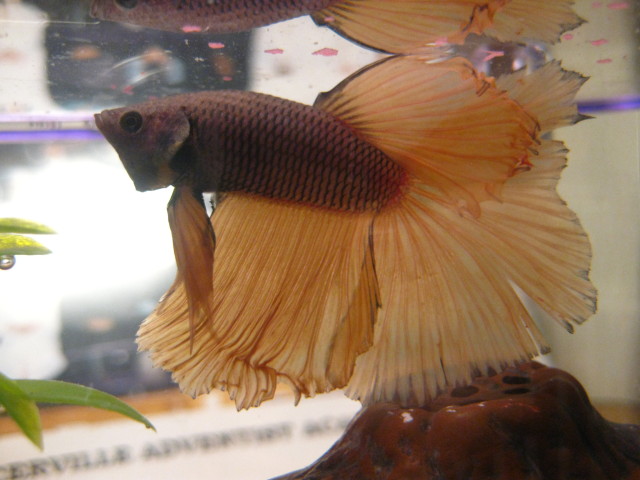 Betta dealing with fin rot?
Question
Dorado
Dear Ms. Beatty,
I bought
Betta dealing with fin rot?
Question
Dorado
Dear Ms. Beatty,
I bought
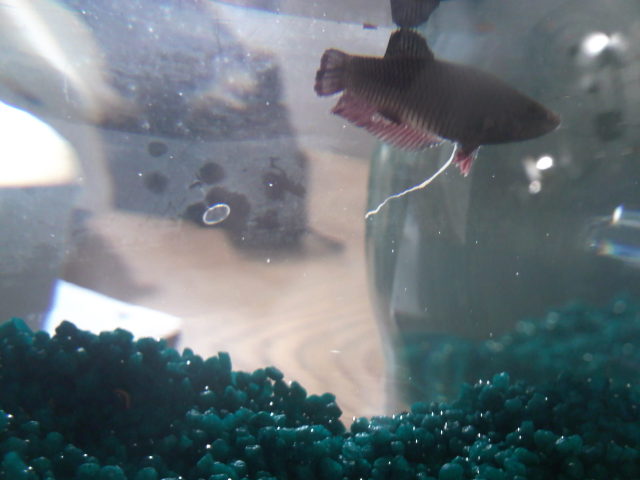 My betta has a white tube hanging,is it sick?
Question
Hanging White tube
Last week I bought a femal
My betta has a white tube hanging,is it sick?
Question
Hanging White tube
Last week I bought a femal
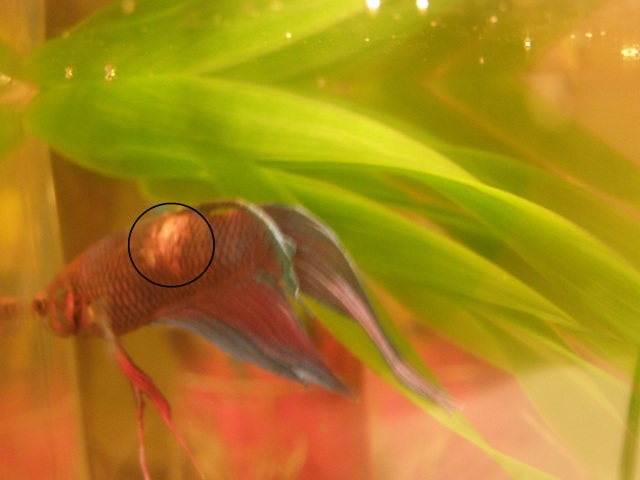 Sick bettas
QuestionPico
QUESTION: Hi Jaymie,
My roommate
Sick bettas
QuestionPico
QUESTION: Hi Jaymie,
My roommate
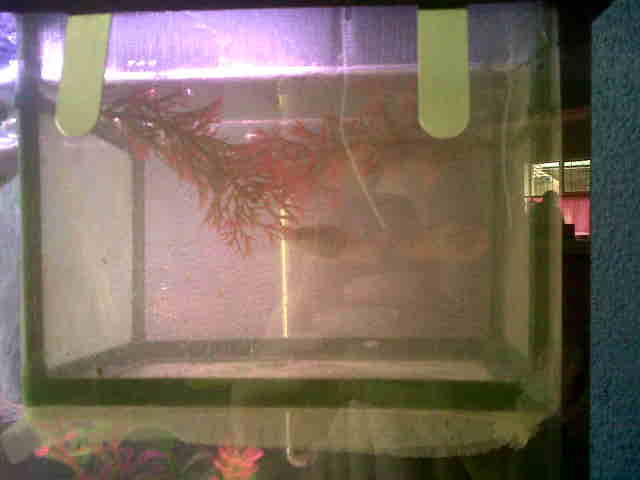 are my mollie about to drop fry?
QuestionQUESTION: Hello all, hope youre doing good ;-)m
are my mollie about to drop fry?
QuestionQUESTION: Hello all, hope youre doing good ;-)m
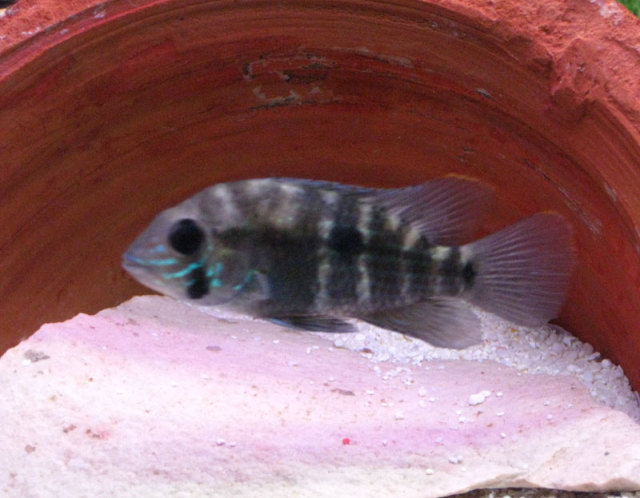 identifying my fish
Question
1
Hello, I would like to know if this fish is
identifying my fish
Question
1
Hello, I would like to know if this fish is